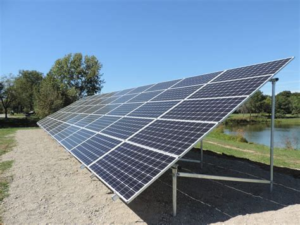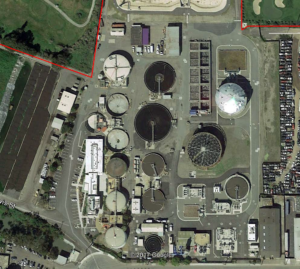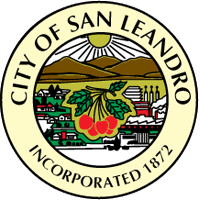City Services Adapting to Serve the Community – Public Works Sustainability Projects
During these challenging times, the San Leandro Public Works Department has continued their vital operations to help keep the community running. Public Works is responsible for the operation and maintenance of the City’s infrastructure including public facilities, parks, and streets, street trees, storm inlets and sanitary sewers.
The department has updated its social distancing, health, and safety protocols in order to continue to safely provide services. They have stayed busy during these times: from April through June, 177 potholes were filled, 22,875 square feet of asphalt applied, 50 tree emergencies were responded to, 189 street signs manufactured and 70 installed, 490,776 linear feet of sewer/storm drains inspected or cleaned, and 9,263 square feet of graffiti removed. A more complete look at the work completed can be viewed HERE.
The San Leandro Water Pollution Control Plant (WPCP) has also been busy implementing sustainable practices into its operations. These upgrades further the City’s Climate Action Plan (tune into to the Public Workshop on October 6th), as well as improve efficiency and reduce costs of operations. Here are the important projects the WPCP has unveiled over the past several months:
Solar Array
 Placed online earlier this year, the WPCP Solar array is a major step forward to the goal of clean, resilient energy. The system produces 1MW of energy, equivalent to nearly 17,000 60-watt light bulbs, from the sun. The array is anticipated to cover nearly half of the annual electrical consumption at the plant, which is the largest energy consumer in the City. Onsite power generation is the stepping stone towards the next energy project anticipated to begin in late 2020.
Placed online earlier this year, the WPCP Solar array is a major step forward to the goal of clean, resilient energy. The system produces 1MW of energy, equivalent to nearly 17,000 60-watt light bulbs, from the sun. The array is anticipated to cover nearly half of the annual electrical consumption at the plant, which is the largest energy consumer in the City. Onsite power generation is the stepping stone towards the next energy project anticipated to begin in late 2020.
Microgrid, Battery Storage, and Compressed Natural Gas
 With recent approval from the City Council, Public works will be moving forward with the next step in energy independence and resiliency. This project entails a massive investment in the future that will allow the WPCP to operate independently from the power grid, and away from diesel powered back-up during power outages.
With recent approval from the City Council, Public works will be moving forward with the next step in energy independence and resiliency. This project entails a massive investment in the future that will allow the WPCP to operate independently from the power grid, and away from diesel powered back-up during power outages.
The project employs a microgrid, battery storage, and efficiency upgrades in order to accomplish this feat. When not tasked with powering the entire system, the battery storage is able to store energy from the solar array and use that energy to offset power consumption at night.
Another facet of the project is the conversion of biogas into compressed natural gas (CNG) for vehicle fuel. The plant currently burns a significant portion of the gas produced in the process of treating sewage, wasting a valuable resource. The new system will clean and compress the gas and offer it for sale. The combination of efficiency upgrades, battery storage, and gas storage is anticipated to provide significant savings and more than pay for itself over its lifespan, which is expected to last at least 15 years.
Wetland
Since 2017, the City’s WPCP staff has been working toward transforming an underutilized, 4.3 acre water storage basin adjacent to the Bay and along the Bay Trail into a Treatment Wetland. The Treatment Wetland will process about 1 million gallons per day (of the approximate 5 million that the plant processes daily) and is designed to help the City to cost-effectively meet upcoming requirements to prevent additional nutrients from entering the Bay, while improving the habitat for native plants and animals, and restoring a section of the Bay to a more natural state. This is part of a growing movement to use more nature-based solutions for treating wastewater – processes that blend into the natural environment, are resilient to sea level rise, and increase habitat – and is one of the first of its kind in the Bay Area.
The project is supported by a $540,000 grant from the San Francisco Bay Restoration Authority from the first round of funding through the Measure AA grant program. The project is currently entering the 60% design phase and the City hopes to start construction in 2021. Design work has been moving forward on schedule during the pandemic, thanks to a dedicated design team that seamlessly switched to online meetings and telecommuting while juggling family responsibilities.








Leave a Reply